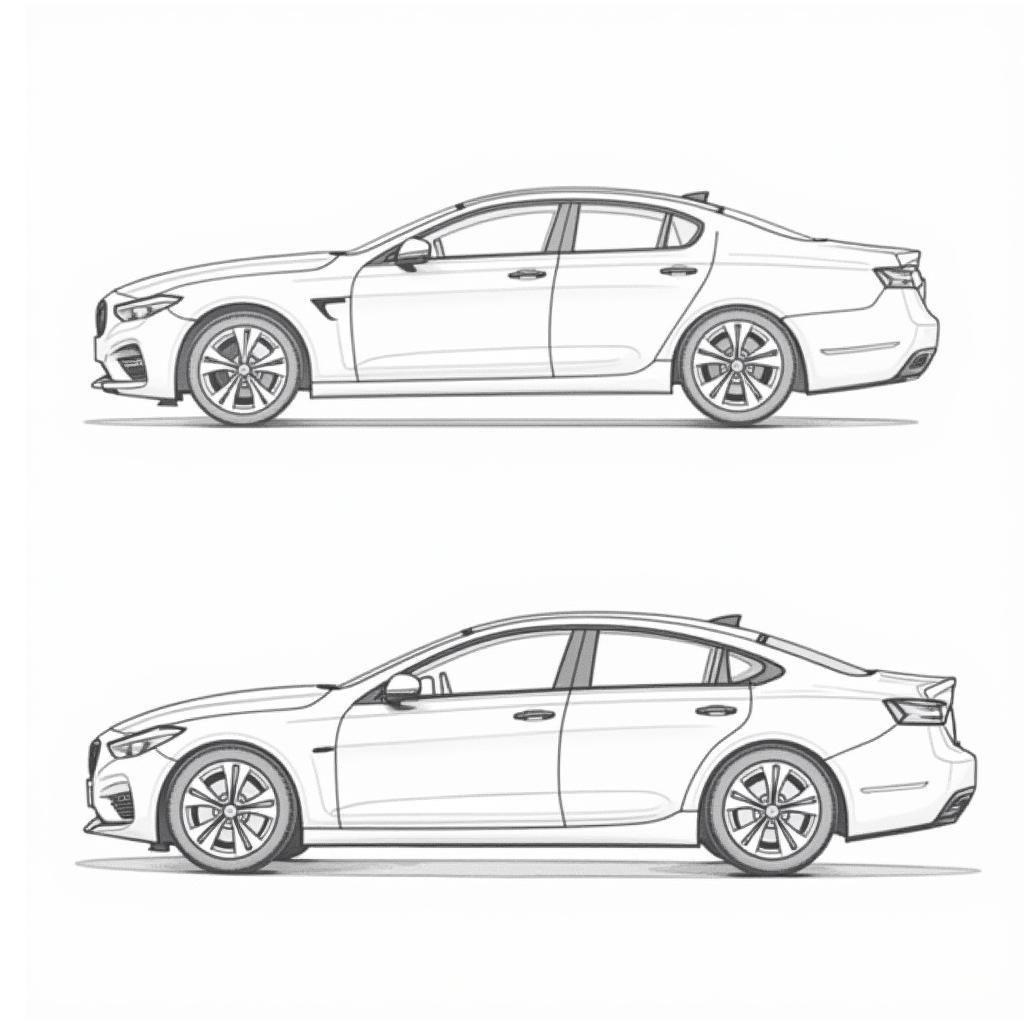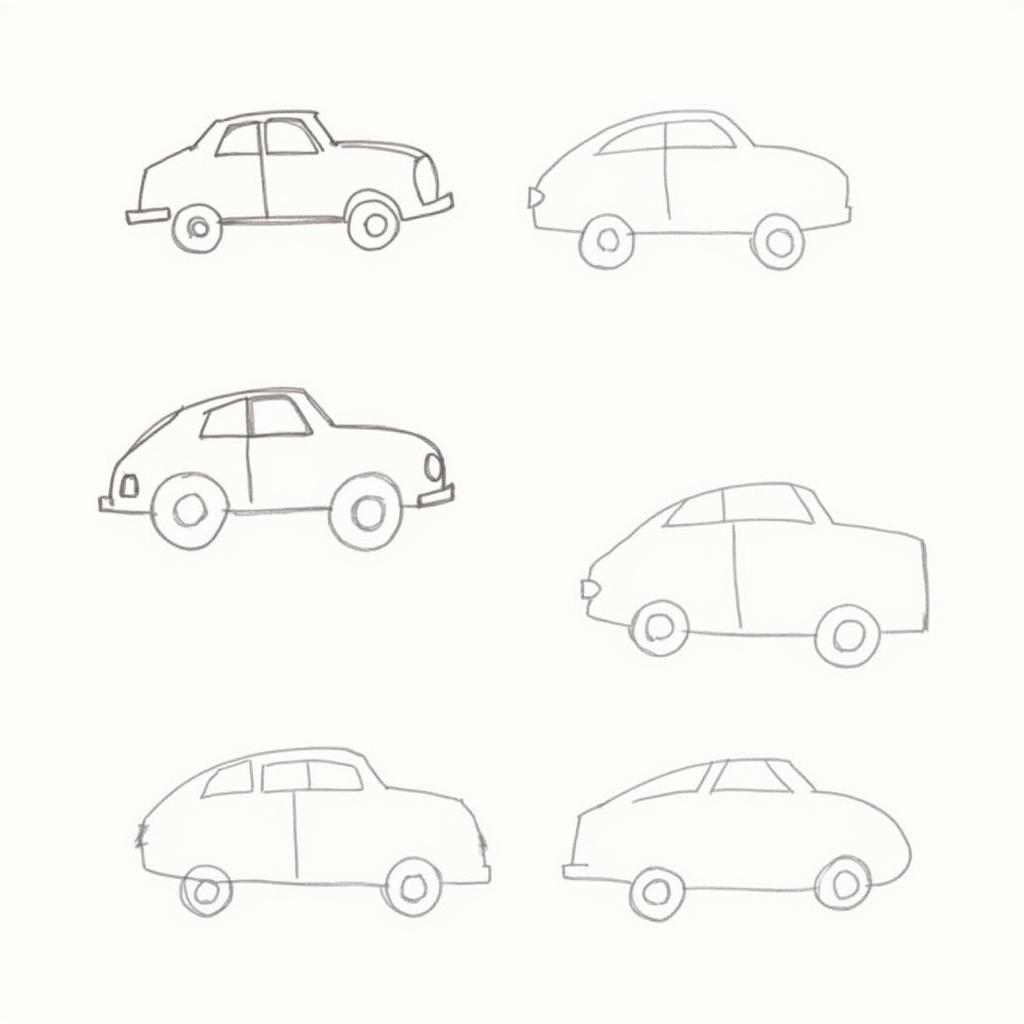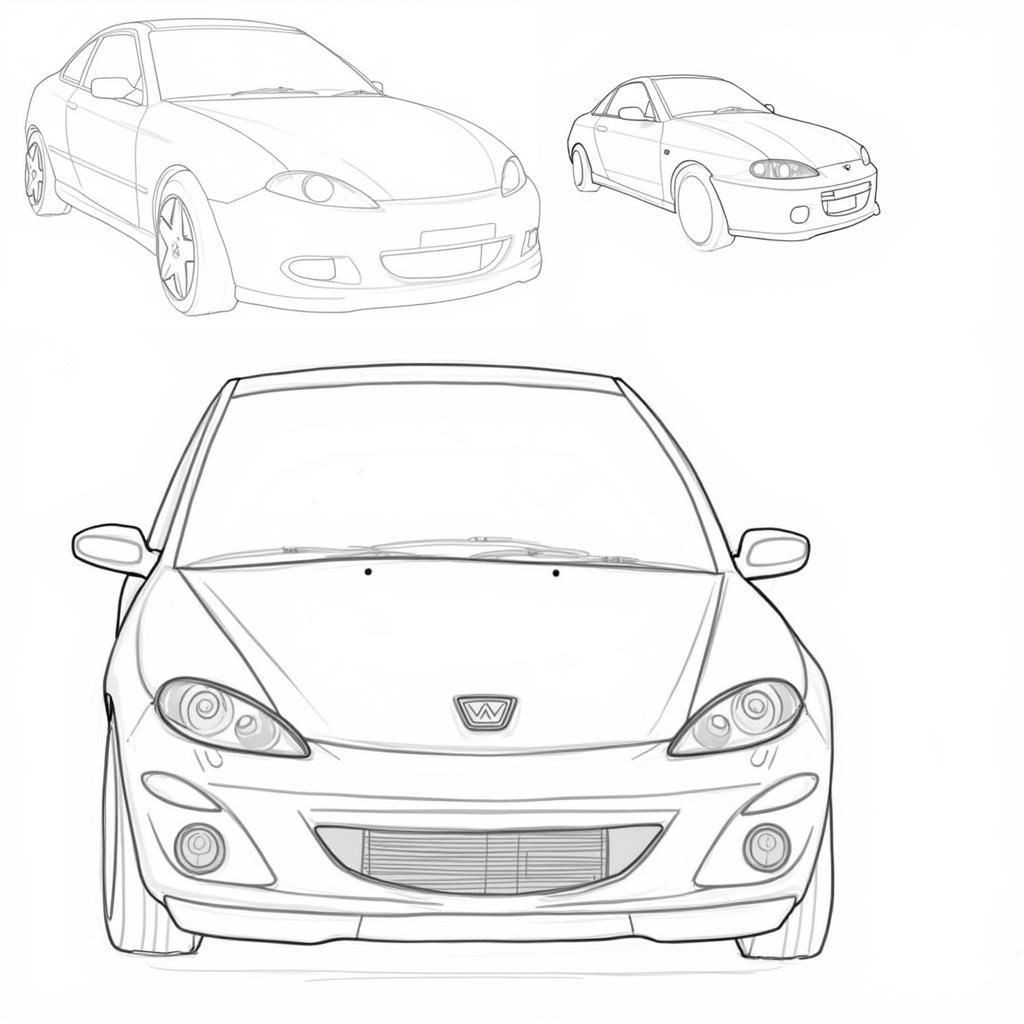Want to learn How To Draw A Car Detailed Like A Pro? Drawing cars, especially with intricate details, can seem daunting for aspiring artists. But fear not! With a structured approach, the right techniques, and consistent practice, anyone can master the art of automotive illustration. This comprehensive guide will equip you with all the knowledge you need to confidently sketch your dream car, from the sleek curves to the intricate details.
 Car Drawing Perspective Guide
Car Drawing Perspective Guide
Understanding the Basics: Shape and Form
Before diving into the details, it’s crucial to grasp the fundamental principles of drawing a car. Cars, like any other three-dimensional object, are defined by their shape and form. Start by breaking down the car’s complex structure into basic geometric shapes like rectangles, circles, and triangles. This simplification helps you establish the overall proportions and create a solid foundation for your drawing.
Once you have the basic shapes in place, you can start refining them, adding curves and contours to achieve a more realistic representation of the car’s body. Remember to pay attention to the perspective and how the lines converge towards vanishing points to create a sense of depth.
Mastering Perspective: The Key to Realism
Perspective is paramount when aiming for realistic car drawings. It’s the technique that creates the illusion of depth on a two-dimensional surface, making objects appear closer or farther away. For car drawings, one-point and two-point perspectives are commonly used.
One-point perspective works well for cars viewed head-on or from the rear, while two-point perspective is ideal for side views or angled shots. Mastering perspective might seem challenging initially, but practice and a keen eye for detail will help you achieve stunning results.
 Car Drawing Using Basic Shapes
Car Drawing Using Basic Shapes
Adding Details: Bringing Your Car to Life
Once you have a solid foundation with accurate proportions and perspective, it’s time for the exciting part—adding details! Start with the larger elements like wheels, headlights, and windows. When drawing wheels, remember that they are not perfect circles but ellipses due to perspective.
Next, move on to smaller details like door handles, mirrors, and grilles. These finer points add character and realism to your drawing. Don’t be afraid to use references—photographs of the specific car model you’re drawing can be invaluable at this stage.
Shading and Highlights: Creating Depth and Dimension
Shading and highlights are essential for transforming your flat line drawing into a three-dimensional masterpiece. By strategically applying light and shadow, you can create the illusion of volume, depth, and texture.
Start by identifying the light source in your drawing. Areas directly hit by the light will be the brightest, while those further away or obscured will be darker. Use a range of pencils, from light to dark, to create a smooth transition between these tones, giving your car a realistic and dynamic appearance.
Tips and Tricks from a Car Detailing Expert
Here are some insider tips from a car detailing professional to elevate your car drawings:
- Pay attention to reflections: Cars are highly reflective surfaces, so observe how light interacts with the bodywork, creating highlights and reflections. Capturing these accurately will make your drawing pop.
- Focus on the wheels: Wheels are crucial to a car’s overall aesthetic. Take your time to draw them accurately, paying attention to the spokes, rims, and tire treads.
- Don’t neglect the background: A simple background, even just a horizon line, can add context and depth to your car drawing, making it more visually appealing.
 Adding Details to Your Car Drawing
Adding Details to Your Car Drawing
FAQs about Drawing Cars
Q: What are the best pencils for drawing cars?
A: A combination of graphite pencils ranging from H (hard) to B (soft) is ideal. Hard pencils are great for outlines and light shading, while soft pencils are perfect for darker tones and creating depth.
Q: How can I improve my perspective drawing skills?
A: Practice is key. Start by tracing perspective grids and gradually work your way up to drawing simple objects in perspective. There are also plenty of online tutorials and resources available that can help you improve your skills.
Q: Do I need special art supplies to draw cars?
A: While having professional-grade supplies is a bonus, you can start drawing with just a pencil and paper. As you progress, you can experiment with different drawing tools like fineliners, markers, and even digital software.
Conclusion
Learning how to draw a car detailed like a pro is an achievable goal with the right guidance and dedicated practice. Remember to start with the basics—understanding shape, form, and perspective—and gradually add details, shading, and highlights. Don’t be afraid to make mistakes; they are valuable learning opportunities.
Want to explore more about car care and maintenance? Check out our other informative articles on how long should a car detail take, how much is the average cost of car detailing, and where to start when detailing a car.
Need help with your car’s detailing? Contact us via WhatsApp: +1(641)206-8880, or Email: [email protected]. Our dedicated customer service team is available 24/7 to assist you.

Leave a Reply